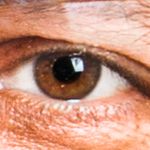Mandarin Chinese - Indesign
Copy link to clipboard
Copied
Hi,
I am editing a flyer in Indesign: English and Mandaran Chinese.
The Chines text will be delivered by a Word Doc. How can I copy - paste the characters into Indesign? (without getting characters like X or ??)
Thank you in advance
Copy link to clipboard
Copied
Don’t paste, place the Word document and make sure the font you’re using in InDesign supports the Chinese characters.
Copy link to clipboard
Copied
Thank you for your answer!
How do I know that the font supports the Chinese characters? Do you have examples?
Copy link to clipboard
Copied
If you open up the fonts dropdown menu, and scroll towards the bottom of the list, then you will find some dividers separating fonts according to script support - so there will be a section of Korean fonts, a section of Simplified Chinese fonts, a section of Traditional Chinese fonts, and so on. Mandarin is usually written using Simplified characters - saying "Mandarin" is usually shorthand for "Simplified Chinese characters intended for mainland China."
The list of fonts that you see with Simplified Chinese support in the ID font dropdown will depend on your platform. Recent versions of OS X helpfully label fonts with "SC" and "TC" to indicate script support. On Microsoft operating systems, the category with Microsoft JhengHei will be Traditional, and Microsoft YaHei will be Simplified. You should also open up the Word file and see what font was used by the document producer.
Copy link to clipboard
Copied
Simplified Chinese is used in Peoples Republic. Taiwan, Hong Kong, Singapure and some more use Traditional Chinese. They differ from my amateurish point of view from the complexity of the signs.
Japanese fonts tend to have a few Chinese characters in, but they are by far not as complete as needed for typesetting Chinese. You will see, when hitting a Japanese font...
Copy link to clipboard
Copied
Simplified Chinese is used in Peoples Republic. Taiwan, Hong Kong, Singapure and some more use Traditional Chinese. They differ from my amateurish point of view from the complexity of the signs.
Officially, Singapore (where Chinese is a state language) uses Simplified characters, and that's what is taught in schools. Or, so I'm told; Singapore is not usually one of my target locales. 100% of the ethnic-Chinese Singaporeans I've worked with were completely fluent in more than one Chinese language, and were completely competent in both Simplified and Traditional scripts. (This may be because the language industry attracts such people. ![]() )
)
Japanese fonts tend to have a few Chinese characters in, but they are by far not as complete as needed for typesetting Chinese.
There are some Japanese fonts that have more-or-less complete Unihan glyph complements, but I never suggest to anyone that they use Japanese fonts for Chinese typesetting. This is because it's far too easy to accidentally use a Japanese glyph form, if you don't know what you are doing, and it is absurdly easy to alienate your Chinese readership by doing so. It's best to use fonts intended for your readership, made by type designers who know what they are doing.
I do copy paste from Word to InDesign and even back with my Chinese text and that works fine.
That often works fine, but it doesn't always work fine for everyone on every platform in every case. On the other hand, if you place a Word file, then the default Word-file import settings in InDesign should automatically apply the font used by the Chinese writer or translator. So when giving Chinese typesetting advice to strangers on the Internet, whose computing environment I know nothing about, I always suggest placing Word/RTF files.
Copy link to clipboard
Copied
Correct. Singapore uses simplified Chinese.
I say that copy/paste works fine for me. I do not say, that it's the best solution. I have problems with placing Word files however, Thats why I do not like that.
My first Chinese typesetting is more then 20 years ago. 1 month ago I did severeal Chinese brochures. It's the same as doing Russian, except that the text is hell a lot shorter.
Copy link to clipboard
Copied
I do copy paste from Word to InDesign and even back with my Chinese text and that works fine. If your font does not support the Chinese character set completly, you will see it. High quality Chinese font sets are expensive and not easy to find. But there exists a free font from Google (Google Noto Fonts ) and from Adobe (same font but different name). My Chinese collegues are happy with those.
There are others coming with Windows, but most do not have bold character sets (like Arial...). I used those formerly, doing bold as an added outline. It works, but is tricky.
Corrections to the Chinese Text may even be done via PDF. My collegues put corrections as comments, and I replace copy/paste the parts.
If your workflow however is to place Word files, that works also fine.
If I have mixed text (ie tradenames in Latin characters in the Chinese text) and some English text in a 2 language document, I use a grep style to adjust the Latin text in the Chinese to be changed to my standard font.
We typeset whole image brochures that way. Word wrap ist mostly no issue. Only rarly do my Chinese collegues correct that. But each time they get text to read, they change one or to Chinese signs.
Tipp: if you are lost in Chinese use Google translate to get an idea on the current text meaning.
2nd Tipp: Chinese is very compact. If the text fits in English, it will fit in Chinese.
Copy link to clipboard
Copied
Hi WOW_NL,
Thank you for posting. Quick alternate answer: you can strip the formatting from the chinese text by pasting (select text, Ctrl+C to copy, Ctrl+V to paste) it into a typical web browser address bar (I prefer Firefox). Then copy again from the address bar (Ctrl+C) and paste (Ctrl+V) into the text frame on Indesign.
This works great if you are completely reworking the formatting of the document for layout, but keep in mind that you will not keep anything from the original formatting.
As of this writing the current version and the one I am using is Adobe Creative Suite 2021 for Windows.
Cheers and Best Regards,
Chris Li 李成就
Source: apologies to whomever thought of this trick first. I have been using this to strip formatting for so long that I forgot where I learned it.
Copy link to clipboard
Copied
I would also like to apologize to China for failing to capitalize "Chinese" in that post.


